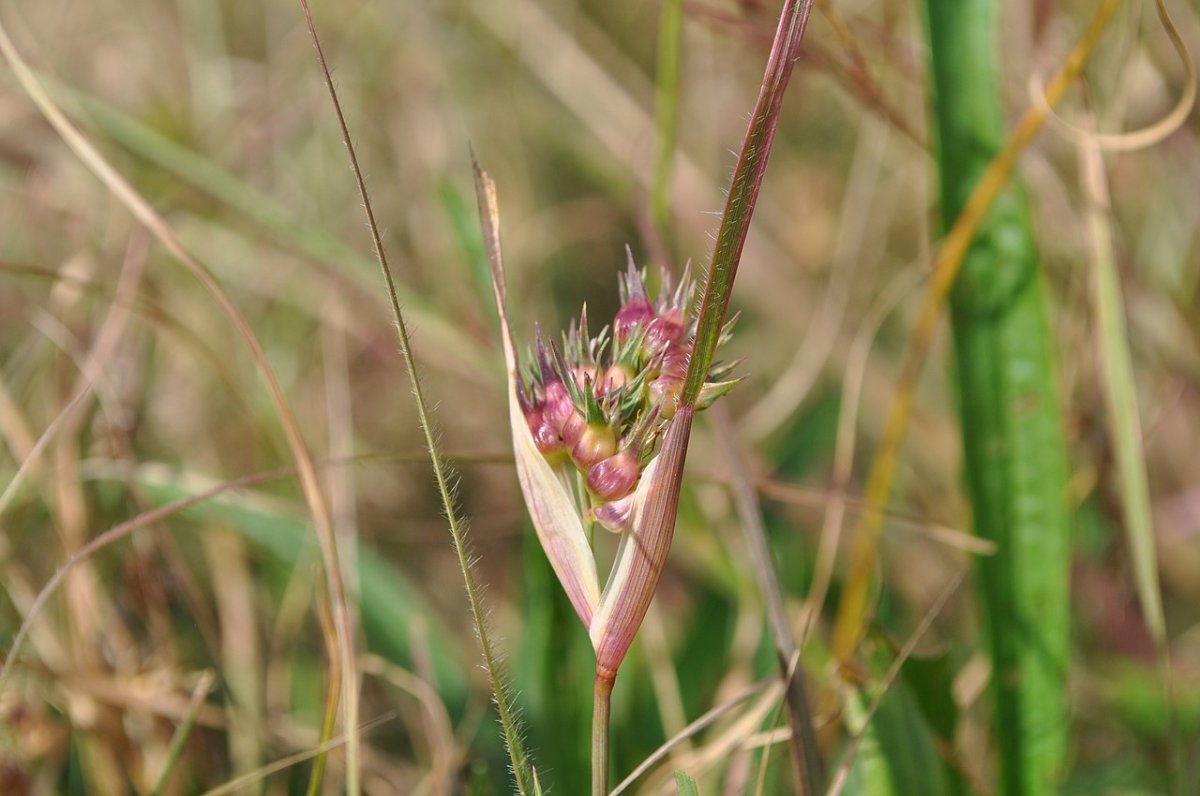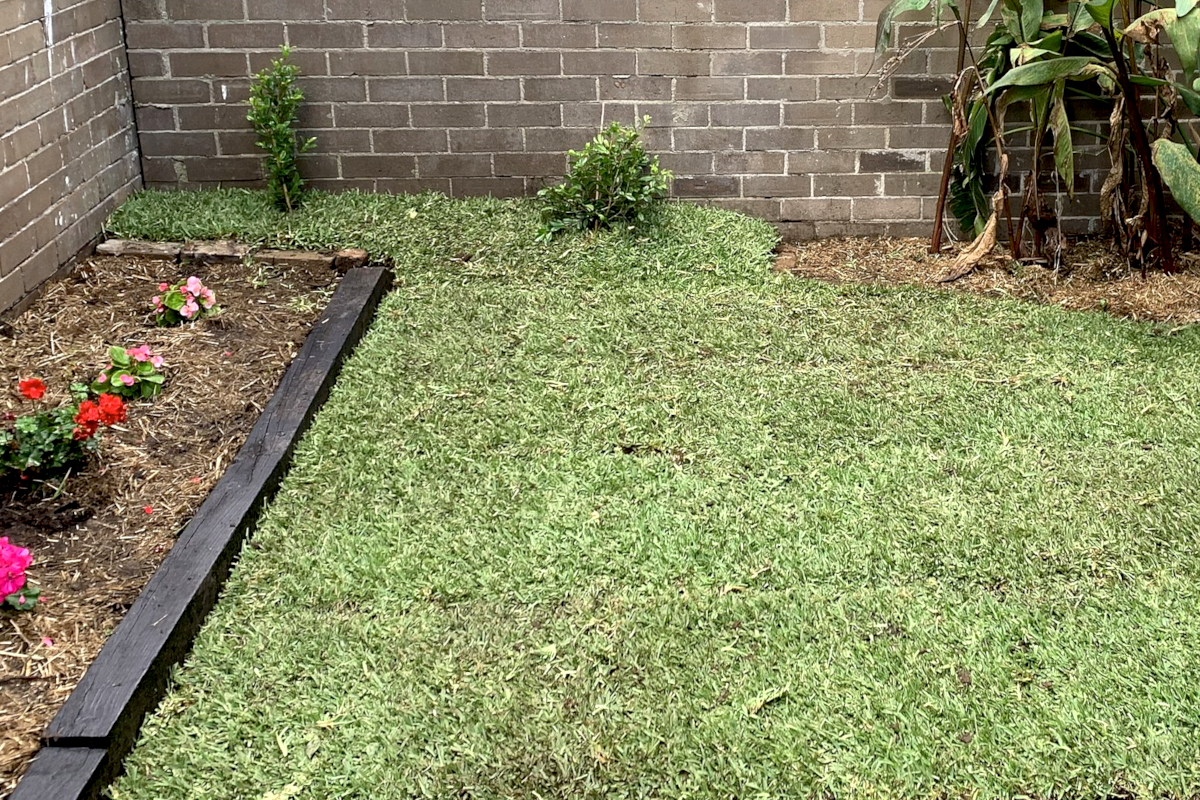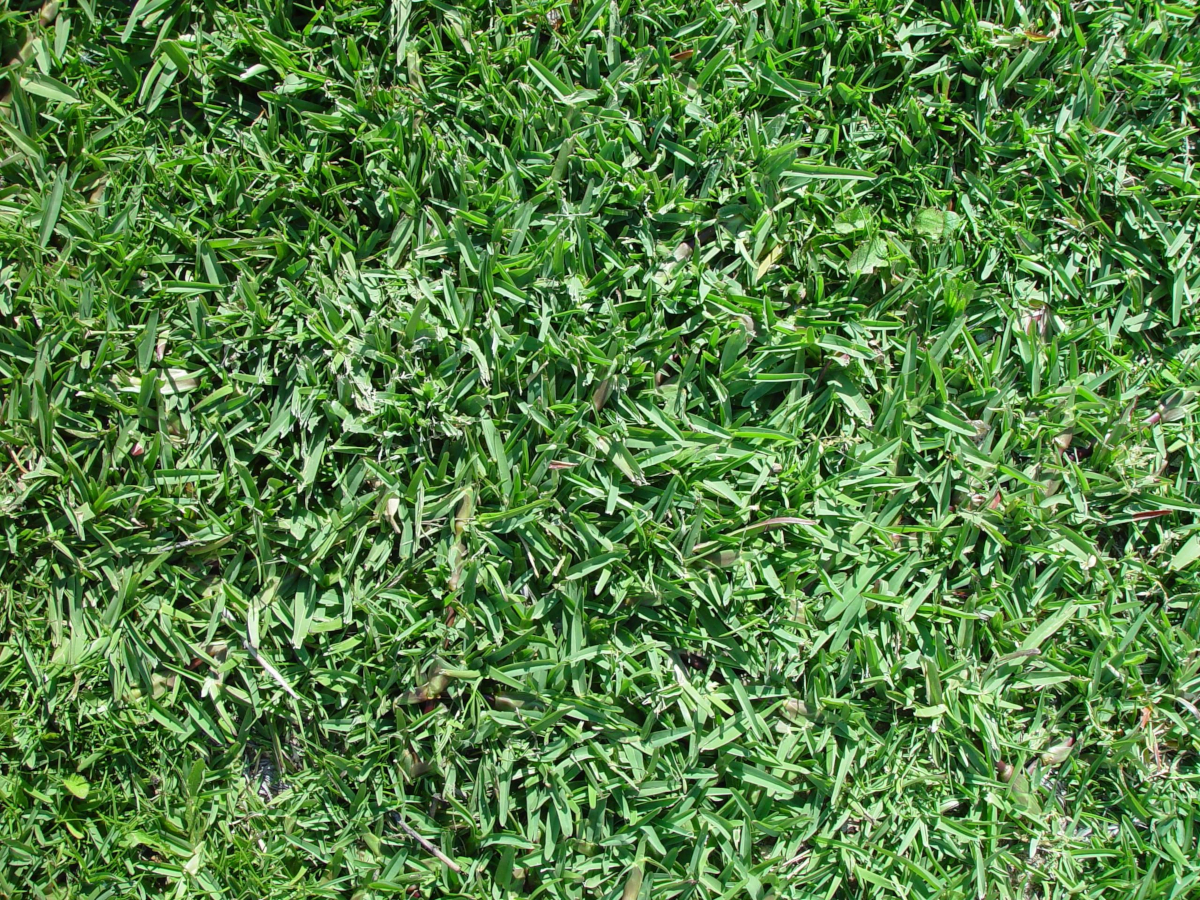

We may earn revenue from the products available on this page and participate in affiliate programs. Learn More ›
Buffalo grass (Bouteloua dactyloides), is a low-maintenance, drought-tolerant grass native to North America. In particular, buffalo grass is best suited to USDA Zones 5 through 9 in the Great Plains, Southwest, or Midwest where sun is plentiful but rain is not.
With its fine texture and soft, blue-green color, a buffalo grass lawn is an appealing choice for several reasons. It’s a practical turf option because it can withstand common lawn problems like drought, disease, and extreme temperatures. Buffalo grass forms a dense mat-like turf and thick sod, and it rarely needs mowing. Before rushing out to plant buffalo grass seed, though, first take a second to learn all of the pros and cons of buffalo grass.
Buffalo grass is a tough turfgrass that can withstand harsh conditions.

As tough as its namesake, buffalo grass subsists in harsh conditions. One of the most recognized and appreciated buffalo grass adaptations is its ability to survive in regions that receive little rainfall (around 15 to 30 inches annually, according to Texas A&M AgriLife Extension). In fact, too much rain (or fertilizer) permits infiltration by other types of grasses and weeds.
This native turfgrass prefers poor soils, including alkaline, sandy, and heavy clay types, as long as there is good drainage. Buffalo grasses can tolerate high heat (up to zones 9 or even 10, depending on the type) and can also endure cold temperatures better than most other warm-season grasses.
Buffalo grass can withstand moderate foot traffic and recovers well from damage, thanks to the thick sod it develops. This happens because the grass spreads through creeping stolons—horizontal stems that form roots.
Buffalo grass lawns are remarkably low-maintenance.
In addition to saving time and water by not having to water buffalo grass once it’s established, homeowners looking for alternatives to high-maintenance lawns can reduce mowing time by installing a buffalo grass lawn. “The biggest benefit of buffalo grass is how little work it requires. It stays green with minimal water or mowing,” says president and CEO of Grass Hole Corporation Kenny Kwiatkowski. Because it grows to a maximum height of 6 inches, with curly blades that turn downward, buffalo grass appears even shorter.
Its ability to form a dense, mat-like sod means few weeds encroach upon a buffalo grass lawn, thus reducing the time needed to get rid of weeds and reducing the need for herbicides. Its height also helps it out-perform weeds. Buffalo grass does not require fertilizer, further reducing lawn-care duties. Nor does this sustainable lawn grass typically require any type of pest control. In fact, it will attract pollinators to your yard.
Buffalo grass is self-seeding and spreads easily.

Buffalo grass seeding occurs naturally as the blades grow. From late spring to early summer, fuzzy burrs, or seed heads, will appear, blooming in the early morning. For 2 to 3 weeks, they are colorful, which attracts pollinators.
As the seed heads mature, they fade to tan or brown, break apart, and dry out. Seeding is completed when the seed heads begin to drop off. At this point, they are viable for germination and can produce new plants.
Because it’s difficult to harvest the grass seed, buffalo grass is also allowed to spread by producing stolons (horizontal stems that form roots). Buffalo grass is an aggressive grower, which means it might require trimming or edging to keep it out of flower beds or other areas where it’s not welcome.
Growing a buffalo grass lawn can take a while.
Patience is key, especially if you’re growing buffalo grass from seed, which is one reason some experts prefer to start lawns with plugs or sod rather than buffalo grass lawn seed. Seeds can take 2 to 3 weeks to germinate, must be planted at the right time (spring through July in most areas) and temperature (above 55 degrees Fahrenheit), and given plenty of sun and moisture to start growing.
Just as it’s slow to germinate, buffalo grass also establishes slowly. It can take up to 3 years to grow into a thick, lush lawn—until it does, weeds can infiltrate the sparse spots in the lawn. Overseeding can help.
“Give buffalo grass space to spread, pick the right seed, and commit to getting it established the first year,” says Steve Sylva, owner of Steve’s Services in Malden, Massachusetts. “Your reward is a lawn that truly cares for itself—perfect for homeowners who want to enjoy their yard more than maintain it.”
Buffalo grass isn’t for everyone.
While the low-maintenance aspect of buffalo grass is certainly appealing, it’s not the right option for every space. For example, it’s not a good choice for shady areas or rainy regions where the ground is frequently wet, soggy, or saturated. When overwatered, it is more vulnerable to disease.
As a warm-season grass, buffalo grass blades lose their color in autumn. Its lack of uniform growth can leave your lawn susceptible to weeds unless you overseed. Because it grows slowly, it can require more patience than other grass types until it provides a consistent turf look.
The aggressive nature of this native grass can lead to spread beyond the intended area. Keeping it contained in a small yard could be labor-intensive in some conditions. Because it features a thicker turf, it might need more dethatching than other grasses—a potentially labor-intensive duty. Finally, buffalo grass seed tends to be more expensive than that of some other types of turfgrass.
Final Thoughts

Buffalo grass is an attractive native grass with much to offer. It tolerates drought and heat very well. Buffalo grass needs full sun, but requires little to no mowing, depending on how natural a setting it’s in or the desired appearance. The blades are soft on bare feet so it makes for an excellent poolside grass, and its long roots make it a desirable choice for hillsides and erosion control.
But buffalo grass will not thrive everywhere—it can have problems in regions that get a lot of rain—and it takes quite a while to establish.
“To get the best results with buffalo grass, choose a variety suited to your climate and be patient during establishment,” Sylva advises. “Mow to 2 to 3 inches, apply light amounts of fertilizer in spring and summer, and only water when the blades curl. Once established, you’ll have a durable, lush lawn for years.”
